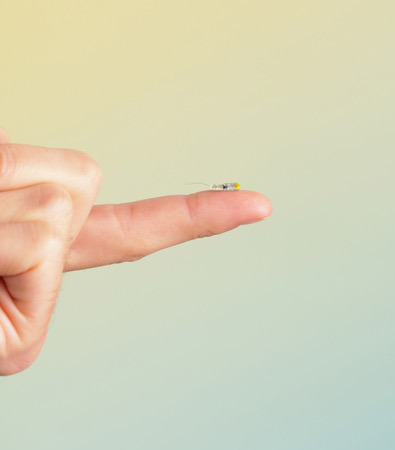Published on
Updated
Reading 2 mins.
A Parisian company intends to launch in the coming years a mini-robot the size of a grain of rice, capable of navigating in the brain to release a treatment with maximum precision. A technology that could directly target Parkinson’s disease, among others.
A robot of only a few millimeters, injected into the brain and piloted by a surgeon to treat a neurological disease? This is not science fiction, but the ambition of a very serious Parisian company, Robeauté, founded by Bertrand Duplat and Joana Cartocci 6 years ago. Revealed in the pages of the Parisian, their project is now well advanced, since it is now in preclinical trials in several hospitals in France. The company thus intends to advance the management of certain cancers and neurodegenerative diseases, starting with Parkinson’s and Alzheimer’s.
A robot designed as a “satellite launcher”
Due to its tiny size, no bigger than a grain of rice, the designed nanorobot has a double advantage: not only is it so small that it can be inserted into the brain via a very small hole in the skull (under the supervision of the neurosurgeon), but he can then “navigate” according to the commands of the surgeon without degrading anything in the cortex. In order not to lose any of his progress and to adapt to any situation, the neurosurgeon views the images from the scanner in real time and controls the machine remotely using… PlayStation controllers, indicates the Parisian.

“We thought of it as a satellite launcher” explains Joana Cartocci, co-founder of Robeauté, contacted by Doctissimo, “our robot has a standard part and an extension cargo grafted to the device, which adapts to specific use. It can thus present a delivery tool within the brain itself, with a minimal invasive action”.
The ambition is thus twofold: to reduce the surgical trauma and to access specific areas with precision, indicates one of the experimenters, the neurosurgeon Arthur André, in the daily newspaper.
A very wide range of pathologies could benefit from it
But in what case can we imagine launching a robot in the brain? Here again, the company is advancing on much more concrete than futuristic ground:
“Today, there are a lot of pathologies that need treatment, a local response. Ultimately, this technology can be used wherever there is a need to deposit a specific treatment in real time, whether it is a molecule or electrodes to act by electrostimulation”.
Thus the deep electrostimulation made possible by this advanced technology could act in diseases such as Parkinson’s, dystonia, epilepsy, but also deep depression resistant to treatments or Alzheimer’s, she announces.
The nanorobot, when is it?
At the preclinical testing stage, however, the nanorobot should not be inserted into your brain for several years. Clinical trials must first be undertaken and validated before making the device accessible to all hospitals. However, it could happen sooner than you think.
“We hope to be able to use our robots in practice on patients by 2027, so it’s tomorrow” says Joana Cartocci.
A bet that they may be able to take with the support of renowned universities who believe in their project.
